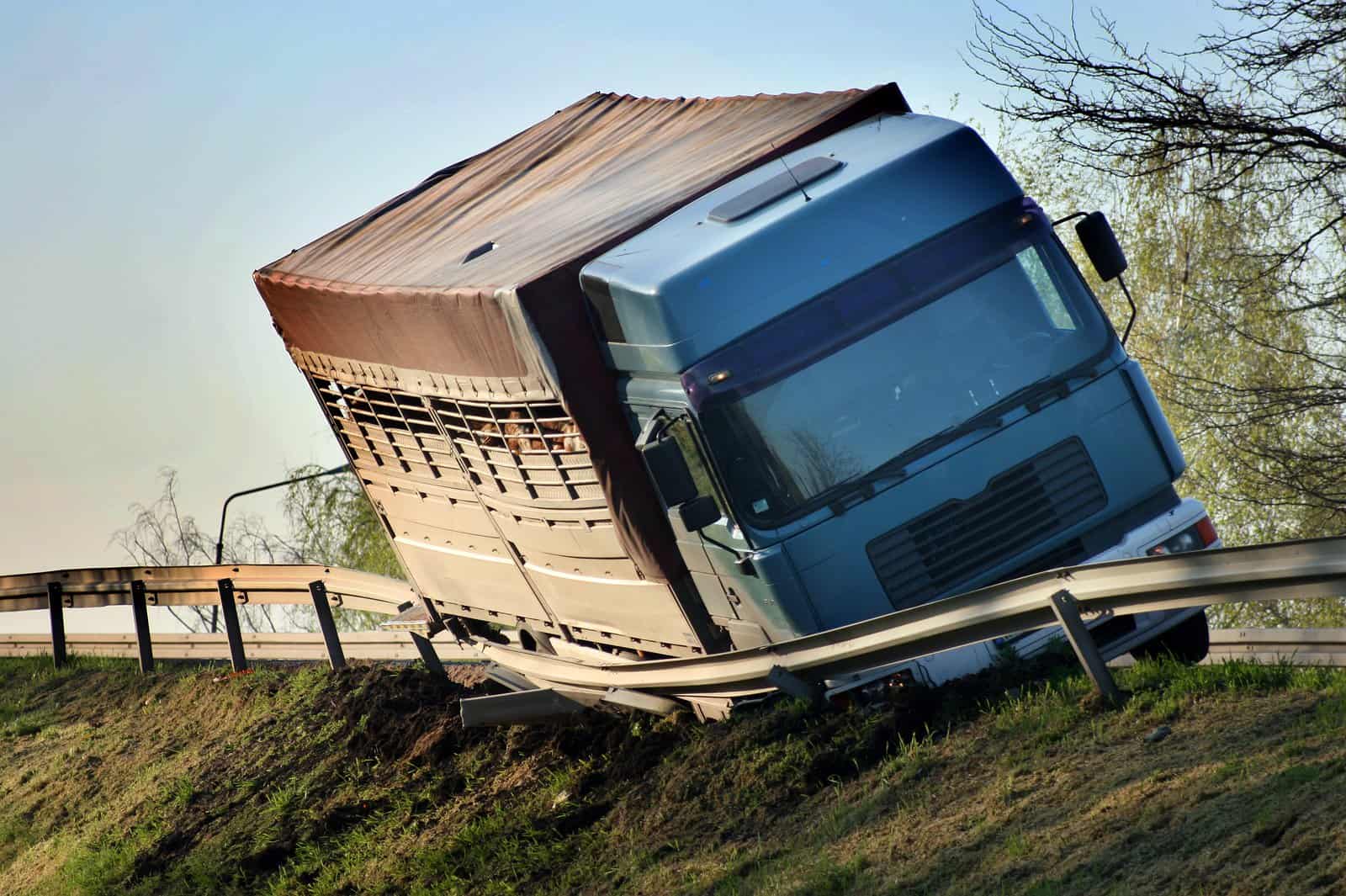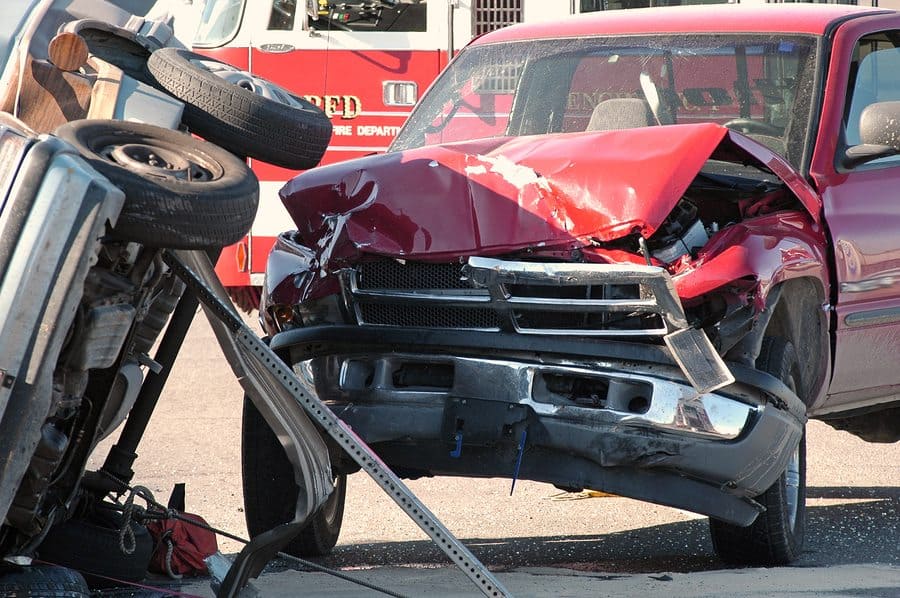Between 2009 and 2013, more than 14,000 fatal crashes involving heavy trucks commercial vehicles occurred. According to National Highway Traffic Safety Administration’s (NHTSA) statistics, these crashes killed more than 15,000 people. Of these catastrophic accidents, tires factored into 198 of those crashes and 223 deaths. While tire blowouts may not represent the most prevalent cause of accidents on highways and roadways, it does present a dangerous and often unnecessary risk for motorists. Our defective tire accident lawyers explain if tire blowout risk increases with rising speed limits.

In October 2014, National Highway Traffic Safety Administration’s (NHTSA) Office of Defects Investigation (ODI) opened an investigation into 2014 Michelin XZA 295/60/R22.5 tires due to 7 consumer complaints and a police accident report that detailed catastrophic failures of the tires. The police report detailed an accident where a vehicle-carrying commercial truck suffered a tire failure, left the roadway, and overturned onto its side. At the time investigators believed that there was a problem or defect with the Michelin tire that caused it to be more prone to failure than other similar models.
During the course of the investigation, ODI received 10 additional reports from vehicle owners who had experienced problems with the tires. While problems were detected with both the 295/60/R22.5 and 275/70/R22.5 tire sizes, the ODI investigation was focused on the 295/60 model due to their common usage as the original factory-installed tires on many commercial auto hauler trucks.
The Tires Were Not Defective, But They Were Not Rated for the Speeds Traveled or the Loads Hauled
At the request of NHTSA’s ODI, Michelin investigated all known reports tire failure. The causes for the tire failure could be explained by one of the following reasons in each instance:
- Wrong tire installed for vehicle rim size – It was found that a number of truck fleets incorrectly believed that there was a defect affecting the 295/60 truck tires. A number of fleets operating under this assumption substituted the 275/70 tires. However, these tires were not approved for mounting on a 9” rim. Even if the rim was changed, the vehicle would still have a reduced load capacity to be accounted for in order to reduce the likelihood of a trucking accident.
- Road hazard – Debris or other hazards on the road can cause the driver to take evasive action. In some cases, the driver can overcompensate for the hazard and lose control of the vehicle. In others, the hazard may be unavoidable.
- Problems regarding vehicle load, speed, and tire pressure – These three factors are related and interdependent. As vehicle load or speed increases, the tire pressure also increases. Both under-inflation of tires and the over-inflation of tires can increase the likelihood of a catastrophic failure.
Some of the problems with the tire pressure are due to the unique configuration of an auto hauler. Auto haulers typically place an increased demand on the vehicle’s front tires. The 295/60 truck tires installed on a 9” rim can carry a maximum load of 7,390 pounds and is rated for speeds up to 65-mph when they are cold inflated to 130 psi. If the tire pressure is below 130 psi, the maximum rated load is decreased. If the 295/60 tire is installed on a different type of rim, the tire’s structural integrity is compromised. The maximum rated speed can be increased to 75-mph, the truck’s maximum load capacity must be reduced to 7,150 pounds.
Unfortunately, it does not appear that many truck drivers have been provided with the knowledge and training to make such adjustments or modifications. In a partnership with the Pennsylvania State Police Motor Carrier Enforcement Unit, ODI conducted a survey of commercial auto haulers driven in Pennsylvania. ODI measured and compiled the tire inflation pressure and the weight of the individual steer axles. More than half – 55% — of all vehicles inspected were found to be overloaded on the basis of tire pressure and actual load weight. When asked, 60% of drivers could not recall or did not know the manufacturer certified tire inflation pressure. If the majority of drivers do not know the correct pressure level for their truck and tires, how can they be expected to make adjustments based on vehicle load and speeds?

At a load of 7,390 pounds, the tires on this particular auto hauler were only rated for speeds up to 65-mph. In many places in the U.S., the speed limit is already beyond the speeds these vehicles can safely be driven. As speed limits on highways and freeways continue their upward trend across the nation, commercial truck drivers will be forced to address this issue more often. Failure to provide the driver with suitable equipment along with the information and training necessary to properly assess load and speed limits will reach even greater levels of importance going forward.
In the end, NHTSA’s investigation concluded that the tires were not defective. The report concluded that “No design changes were reported for the subject tires.” The report then said that “the more likely explanation of failures is the increase in maximum speed limits in several states.”
Pennsylvania’s 70-MPH Experiment
Despite these problems, former Governor Tom Corbett and the Pennsylvania legislature authorized a 2013 traffic study to assess the viability of a 70-mph speed limit on the Pennsylvania Turnpike and on some interstates. The increased speed limit was approved along with a major renovation of the turnpike seeing the road widened from 4 travel lanes to 6. These 70-mph zones included:
- A 100 mile stretch of the Pennsylvania Turnpike
- I-80 from Lock Haven (Exit 189) to Dubois (Exit 101)
- I-380 in the Poconos between I-84 and Exit 3
Pennsylvania’s testing of the 70-mph speed limit is an increase over the general rule of a speed limit of 65-mph on most major roads. If the speed limit is increased to 70-mph state-wide, it would represent the 70-mph speed limit moving into the northeast. While this increased speed limit may save motorists several minutes a day, they may also result in additional commercial trucking accidents.
Other States Have Increased Their Speed Limits Beyond 70-MPH
If Pennsylvania’s speed limit is increased to 70-mph, it would match the speed limit in neighboring Ohio and West Virginia. In fact, most states in the eastern Midwest and the South have speed limits of 70 miles per an hour. The outliers are Wisconsin with a 65-mph speed limit and Louisiana which has established a 75-mph speed limit.

However, as you travel westward, speed limits increase even further. The speed limit is 75-mph in Colorado, North Dakota, Montana, New Mexico, and Nevada. In Idaho, Wyoming, South Dakota and Idaho the speed limit reaches 80-mph. In parts of Texas, the speed limit is set at 85 mph. In fact, 16 states permit trucks to travel at speeds of 75-mph or greater. Of those 16 states, 4 permit trucks to travel at speeds of 80 –mph.
Despite the legislature making the determination to increase speed limits to 75-mph or above in 16 states, a representative for NHTSA told ABC News that there is no tire currently on the market that is rated and certified for speeds greater than 81-mph. The spokesperson also stated that the vast majority of tires are rated for a maximum speed of 75-mph.
Faced with the reality that many truck drivers do not have the knowledge to properly adjust tire pressure in relation to load and speed, operation close to or beyond ratings is foolhardy and unnecessarily risky. When you further consider a driver’s tendency to push several miles above the posted speed limit and the speeds, the risks become even more apparent and pressing.
In fact, during this investigation, Volvo determined that one of its auto hauler trucks was equipped with tires that were only rated for a maximum speed of 65-mph. But, as originally designed, the vehicles could exceed this rate of travel. Volvo recalled these vehicles to set an electronic speed limiter to prevent the truck from exceeding the speed rating of the tire.
What are Potential Solutions to This Potential Trucking Safety Crisis?
There are a number of ways and approaches for this safety concern to be addressed. Perhaps the most obvious solution would be to reduce speed limits so that they return to those that were in effect during the mid to late 90s and early 2000s when the tire standards were developed and implemented. However, safety advocates would likely counter that suggestion by stating that a speed limit can still be broken by the truck driver and they would probably urge additional action.

An alternative approach could be to make the installation of an electronic speed limiter mandatory on all commercial trucks. NHTSA actually proposed legislation that would require an electronic limiter in 2013, but the proposed rule has been stalled for years due to industry cost concerns. This is despite a study performed by the Rubber Manufacturers Association that found that speed limiters are already in use in 70-percent of commercial trucks. However, there is still a significant minority of trucks on the road that does not have electronic devices that will prevent them from being operated outside of certified conditions.
Furthermore, according to a report by the American Trucking Association that was cited by the AP, the average speed limit set on these devices is 69-mph. In light of the fact that tires for some vehicles are certified only for speeds up to 65-mph, it is at least possible that some electronic limiters have not been set aggressively enough. Furthermore, when cargo loads increase, safe speeds for travel are decreased. Thus, even when an electronic limiter is installed, it must be configured properly or it will only provide a false sense of security. This false sense of security may encourage the driver to unwittingly exceed safe speeds.
Another solution could include encouraging tire manufacturers to produce tires that can withstand higher speeds and greater pressures without suffering a catastrophic failure. As already discussed, some companies already produce tires that are rated for speeds up to 81-mph. However, even these tires would not be sufficient for areas with an 85-mph speed limit. Furthermore, in areas with 80-mph speed limits, it would be extremely trivial for a driver to exceed safe speeds. Manufacturers and trucking companies are also likely to counter this idea with concerns about increased costs.
Finally, at least part of the solution must include fleet and driver education. Drivers must be informed of the appropriate maximum tire pressure levels and speeds for the particular load that is being hauled. Additionally, drivers must develop habits that include frequent assessment of the tire pressure so that tires do not become under or over-inflated during the course of the journey.
In short, it is likely that there is no single solution or a proverbial “silver bullet” that will address all possible aspects of this problem. A combination of technological measures improved tires, and driver education would likely be necessary to achieve an acceptable resolution to this safety concern. In the meantime, truck drivers should do their part and educate themselves while keeping a close eye on their speed, truck weight, and tire pressure. Taking the time to perform actions like these may make the difference that prevents a serious accident causing catastrophic personal injury and severe damage to the truck and cargo.
To schedule a free legal consultation regarding an accident caused by a tire blowout, call The Reiff Law Firm at (215) 709-6940.
Sources:
Big Rig Fatal Accidents Linked to Driving Trucks over 75-mph
Related Posts
- Ford Recalls More Than 430,000 Vehicles Due to Software Defect
- Can You File a Lawsuit if a Truck Driver Tested Positive for Drugs After a Crash?
- Can a Police Report Be Used Against You in a Car Accident Lawsuit in Pennsylvania?
- How Long Does it Take to Recover from a Traumatic Brain Injury (TBI)
- Jonathan Lau Case: What Happens When Someone Dies from Withdrawal in Police Custody?















